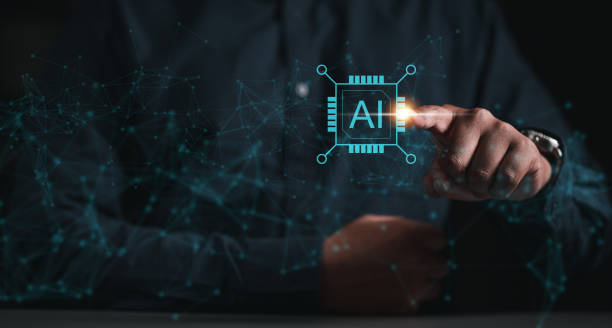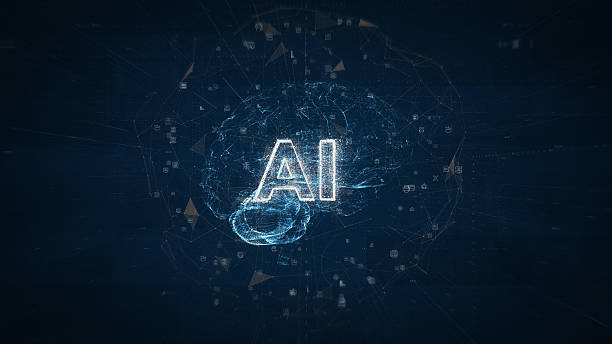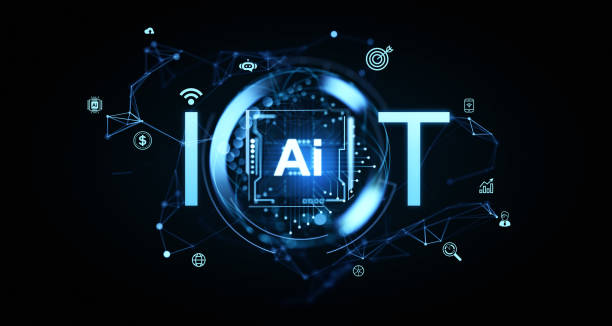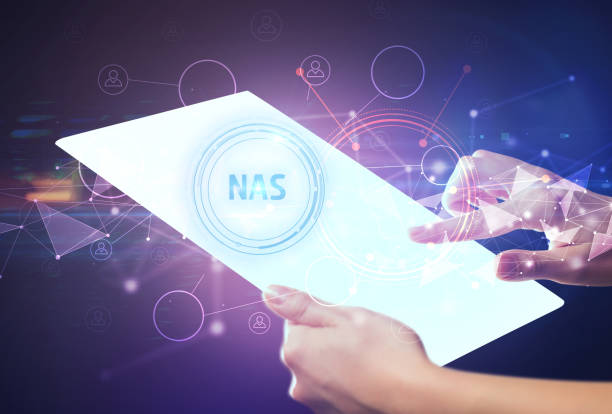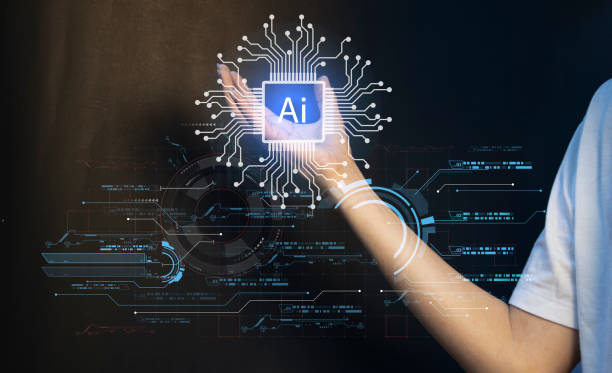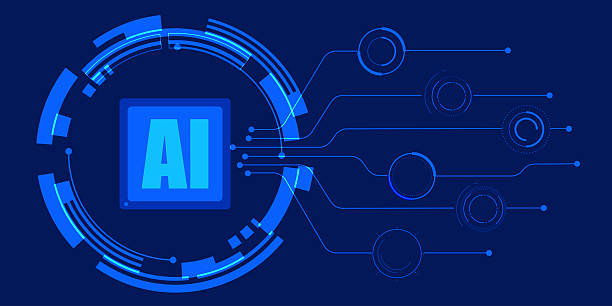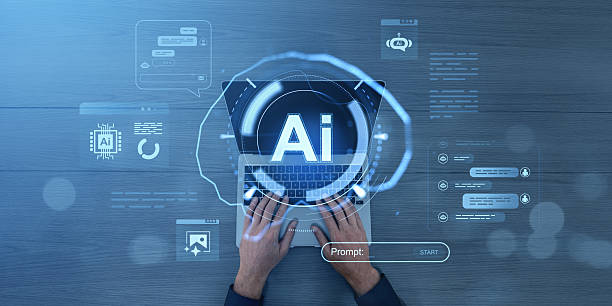What is Artificial Intelligence and What are its Applications?
#Artificial_Intelligence (AI) refers to the ability of a computer system to mimic human cognitive functions such as learning, problem-solving, and decision-making.
Unlike traditional programming where explicit instructions are given to the computer, AI allows systems to learn from data, identify patterns, and make predictions.
This revolutionary technology has already penetrated a wide range of industries and applications.
From autonomous vehicles and virtual assistants like Siri and Alexa to facial recognition systems and movie and music recommenders, AI is reshaping our lives.
In medicine, AI helps diagnose diseases, develop new drugs, and personalize treatment.
In industry, AI is used to optimize processes, reduce costs, and increase productivity.
In finance, AI is used to detect fraud, manage risk, and provide personalized financial services.
Recent advances in Machine Learning and Deep Learning have enabled AI systems to perform tasks that were previously unimaginable.
AI is no longer a science fiction concept, but a tangible reality that is rapidly advancing and impacting all aspects of our lives.
This technology has the potential to fundamentally change our world, but at the same time, it also raises concerns about ethical, security, and social issues.
In the rest of this article, we will take a deeper look at the various dimensions of AI.
Are you tired of your company’s website not being seen as it should be and losing potential customers? Solve this problem forever with professional and effective website design by Rasaweb!
✅ Increase brand credibility and gain customer trust
✅ Attract targeted sales leads
⚡ Contact us now for a free consultation!
Types of Artificial Intelligence: A Closer Look
Artificial intelligence can be categorized based on various criteria.
One of the most common methods is to categorize based on the capabilities of artificial intelligence.
In this classification, artificial intelligence is divided into two main types: Narrow AI and General AI.
Narrow AI, also known as Weak AI, is designed to perform a specific task.
This type of AI is currently used in many applications.
For example, facial recognition systems, movie and music recommenders, and self-driving cars are all examples of Narrow AI.
These systems perform very well in their specific tasks, but are not capable of performing other tasks.
In contrast, General AI, also known as Strong AI, has cognitive abilities similar to humans.
A General AI system is capable of learning, understanding, and solving various problems and can operate in various fields.
General AI is still in the early stages of its development, and no complete General AI system currently exists.
However, research in this area is advancing rapidly, and it is expected that we will see the emergence of General AI systems in the near future.
In addition to these two main types, there is also a third type of AI called Super AI.
Super AI has intelligence beyond that of humans and can surpass humans in various fields.
This type of AI is still a hypothetical concept and no Super AI system currently exists.
Click here to preview your posts with PRO themes ››
Machine Learning: The Backbone of Artificial Intelligence
Machine Learning is one of the main branches of AI that allows systems to learn from data without explicit programming.
In machine learning, algorithms are given to the computer, and the computer uses these algorithms and data to identify patterns and make predictions.
Machine learning is divided into three main types: Supervised Learning, Unsupervised Learning, and Reinforcement Learning.
In supervised learning, training data along with corresponding labels are given to the computer, and the computer learns how to predict new labels based on this data.
For example, to train a facial recognition system, images of different faces along with the names of individuals are given to the computer, and the computer learns how to identify faces.
In unsupervised learning, training data without labels is given to the computer, and the computer tries to discover patterns and hidden structures in the data.
For example, to categorize customers of an online store, information about customer purchases is given to the computer, and the computer tries to categorize customers based on their purchasing patterns.
In reinforcement learning, an agent is placed in an environment and learns how to find the best strategy to achieve its goal by performing different actions and receiving rewards or penalties.
For example, to train a robot to play chess, the robot is placed in a chess environment and learns how to make the best moves by performing different moves and receiving rewards for winning the game.
In this section, we will display 2 tables.
| Learning Type | Description | Example |
|---|---|---|
| Supervised Learning | Data with labels | Facial Recognition |
| Unsupervised Learning | Data without labels | Customer Categorization |
| Reinforcement Learning | Learning through reward and punishment | Playing Chess |
| Advantages | Disadvantages |
|---|---|
| Ability to learn from data | Need for a lot of data |
| No need for explicit programming | Potential for errors |
| Ability to solve complex problems | Need for expertise |
Deep Learning: A Revolution in Artificial Intelligence
Deep Learning is a subset of machine learning that uses artificial neural networks with multiple layers to learn from data.
These networks are inspired by the structure of the human brain and are capable of learning complex patterns in data.
Deep learning performs particularly well in areas such as image recognition, natural language processing, and speech recognition.
For example, facial recognition systems used in smartphones and security cameras today use deep learning to identify faces.
Also, machine translation systems like Google Translate use deep learning to translate texts from one language to another.
By using deep neural networks, deep learning is able to learn complex features from data, which improves the performance of AI systems in various fields.
One of the most important advances in deep learning is the use of Recurrent Neural Networks, which are very suitable for processing sequential data such as text and audio.
These networks are able to learn temporal patterns in data and can be used to predict the future or generate new data.
Deep learning is rapidly advancing and is expected to see more applications of this technology in various fields in the near future.
Is your online store ready to attract maximum customers and sell more? Rasaweb transforms your online business with modern and efficient online store designs.
✅ Increased speed and improved SEO
✅ Excellent user experience on mobile and desktop⚡ Get a free online store design consultation from Rasaweb!
Applications of Artificial Intelligence in the Real World
Artificial intelligence is currently used in a wide range of industries and applications.
In medicine, AI helps diagnose diseases, develop new drugs, and personalize treatment.
AI systems can analyze medical images such as MRI and CT scans and detect anomalies with greater accuracy than doctors.
Also, AI can help doctors choose the best treatment method for each patient.
In industry, AI is used to optimize processes, reduce costs, and increase productivity.
Intelligent robots can work on production lines and perform repetitive and dangerous tasks.
Also, AI systems can analyze production data and identify patterns that help improve processes.
In finance, AI is used to detect fraud, manage risk, and provide personalized financial services.
AI systems can analyze financial transactions and identify suspicious transactions.
Also, AI can help investors choose the best investments and provide personalized financial services.
In addition to these applications, AI is also used in other fields such as transportation, agriculture, education, and entertainment.
Self-driving cars, traffic management systems, agricultural robots, intelligent educational systems, and intelligent computer games are all examples of AI applications in the real world.
Challenges and Ethical Concerns of Artificial Intelligence
Despite the high potential of artificial intelligence, this technology also raises numerous challenges and ethical concerns.
One of the most important concerns is the impact of AI on the job market.
With the advancement of AI and automation, many jobs currently performed by humans may be replaced by machines.
This can lead to increased unemployment and economic inequality.
Another concern is issues related to privacy and data security.
AI systems require a lot of data to learn and function, and this data may include personal and sensitive information of users.
If this data is not properly protected, it may be misused.
Also, AI algorithms may have biases that lead to discrimination in decision-making.
For example, facial recognition systems may perform poorly in identifying faces of people with dark skin color.
In addition, issues related to accountability and responsibility are also among the ethical challenges of artificial intelligence.
If an AI system makes a wrong decision that leads to damage, who will be responsible? These questions require the review and development of new laws and regulations to ensure the responsible and ethical use of artificial intelligence.
In addition, there are concerns about the use of AI in automated weapons and surveillance systems.
The use of AI in these areas can lead to human rights violations and increased violence.
The Future of Artificial Intelligence: What Should We Expect?
The future of artificial intelligence is very bright and full of potential.
With continuous advances in machine learning and deep learning, AI systems are expected to be able to perform tasks that are currently unimaginable.
In the future, we will see a wider use of AI in various fields.
Self-driving cars (Tesla) will become a reality and will make transportation safer and more efficient.
Virtual assistants will become smarter and more capable and will help us with everyday tasks.
Intelligent medical systems will help with early diagnosis of diseases and provide personalized treatments.
Intelligent robots will be present in our homes and workplaces and will help us with various tasks.
In addition, AI can help solve major global challenges such as climate change, poverty, and disease.
AI systems can analyze climate data and identify patterns that help predict climate change.
Also, AI can help develop new solutions for producing clean energy and reducing greenhouse gas emissions.
However, to realize this potential, it is necessary to pay attention to the challenges and ethical concerns of AI and ensure the responsible and ethical use of this technology.
Also, more investment in AI research and development is needed so that we can benefit from all the advantages of this technology.
Artificial Intelligence and its Impact on Businesses
Artificial intelligence has a profound impact on businesses and can help them improve processes, reduce costs, increase productivity, and provide better services to customers.
In marketing, AI can help businesses identify target customers, personalize advertising, and improve conversion rates.
AI systems can analyze customer behavior data and identify patterns that help determine the best time and place to display advertising.
Also, AI can help produce attractive and effective advertising content.
In sales, AI can help businesses predict demand, manage inventory, and improve the sales process.
AI systems can analyze sales data and identify patterns that help predict demand.
Also, AI can help salespeople identify potential customers and offer personalized suggestions.
In customer service, AI can help businesses provide faster and more efficient services to customers.
Intelligent chatbots can answer customer questions and solve their problems.
Also, AI systems can analyze customer feedback data and identify patterns that help improve services.
Overall, AI can help businesses increase competitiveness and profitability.
However, to benefit from the advantages of AI, businesses need to develop a proper strategy for implementing AI and use the appropriate tools and technologies.
Do you have an online store but your sales are not as expected? Rasaweb solves your problem forever with professional online store designs!
✅ Significant increase in conversion rate and sales
✅ Unique user experience for your customers
⚡ Click here to get a free consultation with Rasaweb!
How to Learn Artificial Intelligence? Resources and Solutions
Learning artificial intelligence requires effort and perseverance, but with the use of appropriate resources and solutions, progress can be made quickly in this area.
One of the best ways to start is to participate in online and in-person artificial intelligence courses.
Coursera, edX and Udacity are online platforms that offer a variety of training courses in the field of artificial intelligence.
Also, various universities and educational institutions hold in-person artificial intelligence courses.
In addition to participating in courses, studying books and scientific articles can also help in learning artificial intelligence.
The books “Artificial Intelligence: A Modern Approach” and “Deep Learning” are among the reference books in this field.
Also, reading scientific articles published in reputable conferences and journals can help in being aware of the latest advances in the field of artificial intelligence.
Practical practice is also necessary for learning artificial intelligence.
By using artificial intelligence tools and libraries such as TensorFlow and PyTorch, various artificial intelligence projects can be implemented and valuable practical experiences can be gained.
Also, participating in open-source artificial intelligence projects can help in learning and collaborating with other experts in this field.
In addition, participating in artificial intelligence conferences and events can help in networking with other experts and being aware of the latest advances in this field.
By using these resources and solutions, progress can be made quickly in the field of artificial intelligence and become an expert in this field.
Artificial Intelligence in Iran: Opportunities and Challenges
Artificial intelligence in Iran provides numerous opportunities for economic and social development.
Iran, with its young and educated workforce, has a high potential for developing artificial intelligence.
Artificial intelligence can help improve processes in various industries such as oil and gas, agriculture, and healthcare.
Also, artificial intelligence can help develop startups and new businesses in various fields.
However, the development of artificial intelligence in Iran also faces challenges.
One of the most important challenges is the lack of investment in this area.
To develop artificial intelligence, large-scale investments in research and development, infrastructure, and education are needed.
Another challenge is the lack of skilled labor in this area.
To develop artificial intelligence, there is a need to train skilled labor in various fields such as machine learning, deep learning, and natural language processing.
Also, issues related to privacy and data security are among the challenges of developing artificial intelligence in Iran.
To solve these challenges, it is necessary for the government, universities, and the private sector to work together to develop and implement well-defined programs for the development of artificial intelligence in Iran.
These programs should include investment in research and development, training skilled labor, creating appropriate infrastructure, and developing laws and regulations related to privacy and data security.
By solving these challenges, the opportunities of artificial intelligence can be used to benefit the economic and social development of Iran.
In summary, artificial intelligence is a powerful tool that can create profound transformations in human life.
By using this technology responsibly and ethically, a better and fairer world can be achieved.
Frequently Asked Questions
| Question | Answer |
|---|---|
| 1. What is Artificial Intelligence (AI)? | It is a branch of computer science that aims to create machines capable of simulating human intelligence and performing tasks that require human thinking, such as learning, problem-solving, and decision-making. |
| 2. What are the main types of Artificial Intelligence? | They can be classified into Narrow AI, which focuses on a specific task, General AI, which possesses comprehensive human capabilities, and Super AI, which exceeds human intelligence. |
| 3. Mention some common AI applications in our daily lives. | They include voice assistants (such as Siri and Alexa), recommendation systems (such as Netflix and Amazon), self-driving cars, facial recognition systems, and spam filters. |
| 4. What is the difference between Artificial Intelligence and Machine Learning? | Artificial intelligence is the broader concept of creating intelligent machines, while machine learning is a subset of artificial intelligence that focuses on enabling systems to learn from data without explicit programming. |
| 5. What is Deep Learning? | It is a subset of machine learning that uses multi-layered artificial neural networks (deep neural networks) to process data and discover complex patterns, and is used in image and speech recognition. |
| 6. What are the most important benefits of Artificial Intelligence? | Improving efficiency and productivity, automating repetitive tasks, making better decisions based on the analysis of big data, and developing solutions to complex problems in fields such as medicine and science. |
| 7. What are the main challenges facing the development and deployment of Artificial Intelligence? | They include the need for huge amounts of high-quality data, privacy and security issues, bias in data and algorithms, and high development and maintenance costs. |
| 8. Does Artificial Intelligence raise ethical or social concerns? | Yes, it raises concerns about privacy, algorithmic bias, job loss due to automation, and responsibility for errors made by intelligent systems, and the need for a regulatory framework. |
| 9. How can Artificial Intelligence affect the future of the labor market? | It can lead to the automation of some routine tasks, but it will also create new jobs that require advanced skills in developing, operating, and maintaining AI systems. |
| 10. What are some modern or promising technologies in the field of Artificial Intelligence? | They include advanced Natural Language Processing (NLP) (such as large language models like ChatGPT), computer vision, robotics, and Generative AI. |
And other advertising services of Rasa Web Advertising Agency in the field of advertising
Intelligent Social Media: Transform online growth by customizing the user experience.
Intelligent Custom Software: A fast and efficient solution to increase website visits by focusing on optimizing key pages.
Intelligent Google Ads: Transform user interaction with intelligent data analysis.
Intelligent UI/UX: A fast and efficient solution for digital branding by focusing on customizing the user experience.
Intelligent Data Analysis: Transform click-through rate increase with custom programming.
And more than a hundred other services in the field of internet advertising, advertising consulting, and organizational solutions
Internet Advertising | Advertising Strategy | Reportage Advertising
Resources
Artificial Intelligence Basics: An Introduction to AI
,What is Artificial Intelligence (AI) and How Does It Work?
,Artificial Intelligence
,What is Artificial Intelligence?
? To shine your business in the digital world, from personal website design to comprehensive marketing campaigns, Rasaweb Digital Marketing Agency offers creative and results-oriented solutions.
📍 Tehran, Mirdamad Street, next to the Central Bank, South Kazerun Alley, Ramin Alley No. 6
“`

